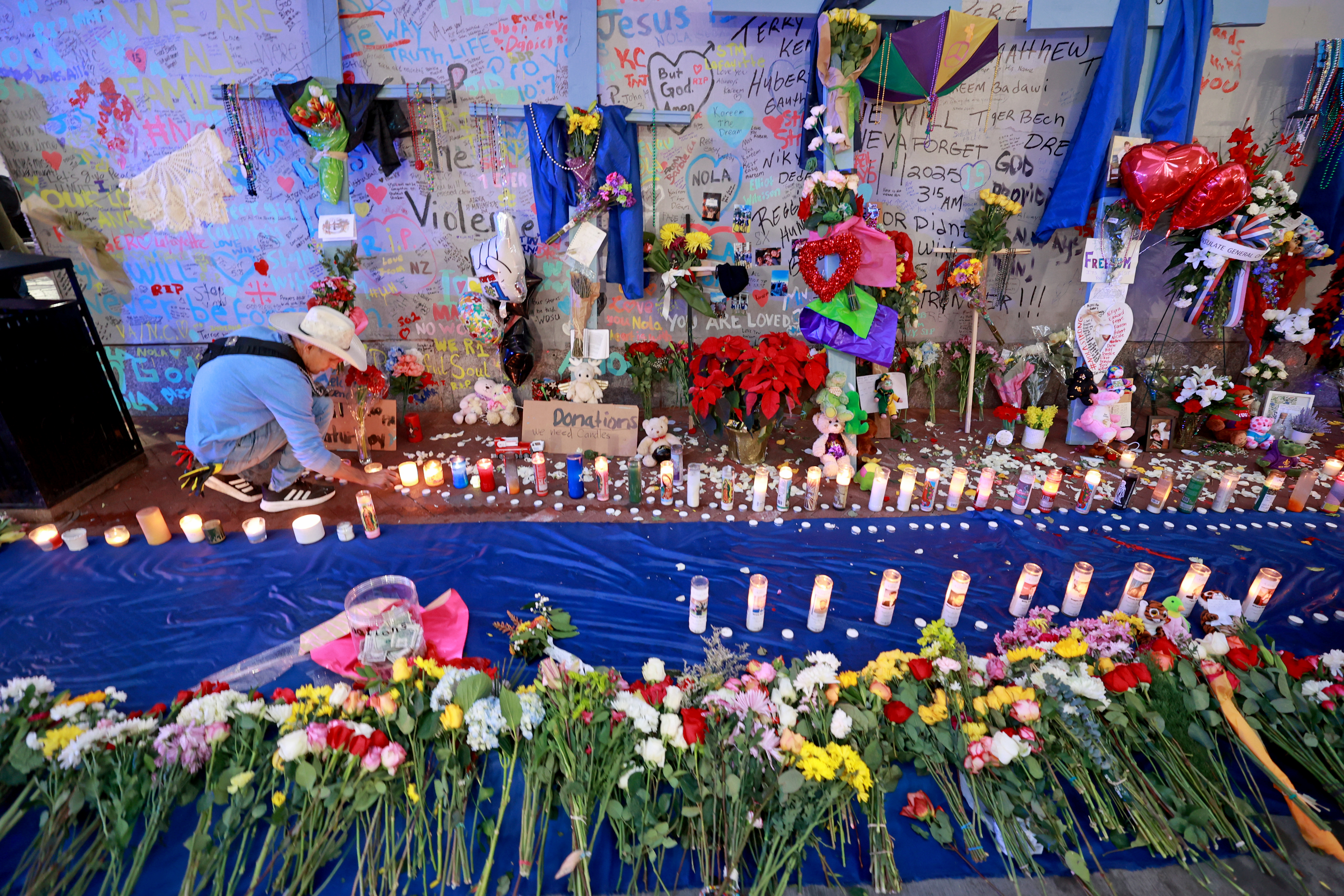New Orleans had access to effective anti-vehicle barriers ahead of the Bourbon Street attack on New Year’s Eve revelers that killed at least 14 people and wounded dozens more, but the city did not deploy those barriers until a day after the carnage unfolded, and the head of the local police department said she had been unaware of them.
New Orleans Police Superintendent Anne Kirkpatrick said Thursday while reopening Bourbon Street that the city had added more protections, including heavy trucks and Archer barriers “that would be preventive if someone had, or if this particular terrorist, went around up on the sidewalk.”
That’s what authorities say occurred just after 3 a.m. Wednesday, when a Texas man inspired by the Islamic State group drove a pickup truck onto a sidewalk filled with people on Bourbon Street, mowing down pedestrians before opening fire on police, wounding two officers and dying in the shootout.
The L-shaped Archer barriers that were installed one day later are portable, reusable and designed to stop a car that is careening toward a pedestrian-only area. The 700-pound steel barriers, which are certified by the Department of Homeland Security, were credited with preventing casualties in a similar incident last year in California at the Rose Parade.
Get top local stories in Connecticut delivered to you every morning. >Sign up for NBC Connecticut's News Headlines newsletter.

When asked about where the Archer barriers came from, Kirkpatrick told reporters: “Actually, we have them. I didn’t know about them, but we have them, and so we have been able now to put them out.”
New Orleans bought the Archer barriers in 2017 from Meridian Rapid Defense Group, which manufactures them, according to Peter Whitford, the company’s CEO. He confirmed that the barriers that appeared on Bourbon Street on Thursday looked the same as the ones from eight years ago.
U.S. & World
“They bought them from us and I don’t know where they were on that day — so I can’t answer that question,” he said of the New Year’s Day attack.
The barriers helped protect central New Orleans during the Mardi Gras parade in 2017, according to a news release Meridian put out that year. “Painted a festive canary yellow, the barriers allowed free pedestrian flow and emergency vehicle access, through the streets while providing a solid perimeter to unwanted vehicles,” the release said.
The New Orleans mayor’s office and police department did not immediately respond to requests for comment Thursday afternoon.
Ahead of Wednesday’s attack, the city had recently removed security barriers known as bollards from Bourbon Street because they were malfunctioning, and the city’s Department of Public Works was in the process of installing new ones. On New Year’s Eve, Bourbon Street was protected by patrol cars, other barriers and a large law-enforcement presence, but they weren’t enough to stop the attacker, Kirkpatrick said at a news conference Wednesday.
“The terrorist just went all the way around up onto the sidewalk,” she said.
When asked Thursday about whether she was upset she hadn’t known about the Archer barriers, Kirkpatrick demurred.
“This is not a matter of pointing blame anywhere — a terrorist is hell-bent on destruction. This man was going to do his best, and if it hadn’t been on Bourbon, he was going to go somewhere else,” she said. “We have this. We’re going to implement it. End of story.”
The Archer barriers played a key role in preventing a similar tragedy last year at the Rose Parade in Pasadena, California, when a woman rammed into one of the barricades protecting the crowd at the packed New Year’s event, according to Lisa Derderian, a Pasadena spokesperson.
The city uses a “tiered” approach to keep people from driving into the parade route, including public works trucks filled with sand, bollards and the Archers. When the woman drove into one of the Archers, it stopped her, Derderian said.
“If those barriers were not up — she could have more than likely killed people in her path,” Derderian said.
Pasadena has rented the barriers to protect the Rose Bowl parade for the last five years, costing the city $110,000 a year, according to Derderian.
George Solis and Maria Piñero contributed.
This article first appeared on NBCNews.com. Read more from NBC News here:



